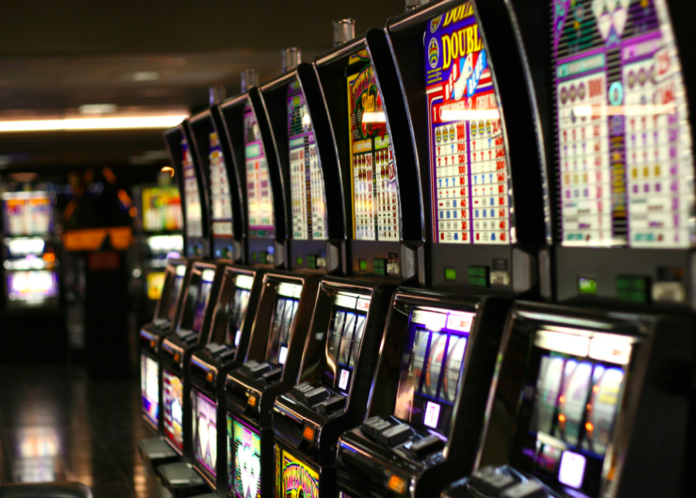Slot machines, often referred to as fruit machines or simply slots, boast a storied history spanning more than a century. From their humble beginnings to their current prominence in the gambling industry, these captivating devices have undergone significant evolution. In this exploration, we unravel the origins, technological leaps, and enduring allure of slot machines, shedding light on their pivotal role in shaping the gambling landscape and captivating players worldwide.
Over the years, slot machines have evolved to incorporate innovative features and themes, continually engaging players with new experiences and opportunities for excitement. From mechanical reels to digital displays and intricate bonus rounds, the evolution of slot machines reflects not only technological advancements but also the evolving tastes and preferences of players. As technology continues to advance, slot machines are poised to remain a cornerstone of the gambling industry, providing endless entertainment and thrills for generations to come.
Origins of Slot Machines
The origins of slot machines can be traced back to the late 19th century when the first mechanical gambling devices were introduced. The precursor to the modern slot machine was the “Liberty Bell,” created by inventor Charles August Fey in 1895. Featuring three spinning reels with various symbols, including horseshoes, diamonds, spades, hearts, and a Liberty Bell, this mechanical device marked the birth of the modern slot machine.
Interestingly, the evolution of slot machines has been marked by several significant milestones:
- Introduction of electronic components: In the mid-20th century, slot machines began incorporating electronic components, paving the way for more complex gameplay mechanics and interactive features.
- Video slots revolution: The 1980s saw the introduction of video slots, which replaced mechanical reels with digital displays. This innovation allowed for more diverse themes, graphics, and bonus features.
- Online gambling boom: With the rise of the internet in the late 20th century, slot machines transitioned to online platforms, offering players unprecedented convenience and access to a wide range of games.
- Mobile gaming era: The advent of smartphones and tablets further revolutionized the slot machine industry, enabling players to enjoy their favorite games anytime, anywhere.
- Emergence of bonuses and promotions: In today’s competitive gambling market, casinos attract players with enticing bonuses and promotions, such as no deposit casino bonus codes for existing players Australia, which offer incentives for continued play and loyalty.
Early Innovations
Following the success of the Liberty Bell, numerous variations of slot machines emerged in the early 20th century. These early machines, often found in bars, saloons, and cigar shops, utilized mechanisms such as coin-operated levers and manual payouts. One notable innovation during this period was the introduction of the “Operator Bell” by Herbert Mills in 1907, which further popularized slot machines across the United States.
During this era of rapid innovation, slot machines underwent significant advancements and adaptations, shaping the landscape of gambling entertainment. Here are some key developments:
- Diverse Locations: Slot machines found their way into various establishments beyond traditional casinos, including bars, saloons, and cigar shops, becoming a ubiquitous form of entertainment.
- Mechanical Innovations: Manufacturers continually refined the mechanisms of slot machines, introducing features like coin-operated levers for easy operation and manual payout systems for winners.
- Widespread Popularity: The accessibility of slot machines in everyday locations contributed to their widespread popularity, attracting players from diverse backgrounds and social settings.
- Cultural Impact: Slot machines became ingrained in popular culture, symbolizing the excitement and thrill of gambling, while also reflecting societal attitudes towards risk and chance.
- Economic Influence: The success of slot machines spurred economic growth in the gambling industry, fueling the development of new technologies and business models to meet the demands of players.
Overall, the introduction of the Operator Bell and other early slot machine variations played a pivotal role in establishing the foundation for the modern gambling experience, setting the stage for further innovation and evolution in the years to come.
Electromechanical Era
The mid-20th century witnessed a significant milestone in the evolution of slot machines with the advent of electromechanical technology. In 1963, Bally Manufacturing introduced the first fully electromechanical slot machine called “Money Honey,” which featured electronic components such as electric motors and electromagnetic brakes. This innovation revolutionized the industry, enabling faster gameplay, automatic payouts, and the introduction of new features such as multiple paylines and bonus rounds.
The Digital Revolution: Video Slots Transform the Industry
The introduction of video slots revolutionized the gambling industry, reshaping gameplay with advanced graphics and interactive features.
Emergence of Video Slots
The late 20th century saw another leap forward in slot machine technology with the emergence of video slots. In the 1970s and 1980s, developers began incorporating video screens and microprocessors into slot machines, allowing for more sophisticated graphics, animations, and gameplay mechanics. International Game Technology (IGT) was at the forefront of this transition, releasing iconic titles such as “Fortune Coin” in 1976, which marked the first video slot machine.
Key Features of Video Slots
This era of technological innovation ushered in a new era of slot machine entertainment, characterized by visual appeal, enhanced interactivity, and diverse themes. Video slots offered vibrant graphics and animations, captivating players with immersive gaming experiences and dynamic storytelling. With the integration of microprocessors, they introduced interactive bonus rounds and mini-games, engaging players in more complex and rewarding gameplay. Developers explored a wide range of themes and narratives for video slots, catering to diverse player preferences and interests, from ancient civilizations to futuristic adventures.
Impact of Video Slots
The introduction of video slots in casinos and gaming venues expanded access to slot machine entertainment, attracting a broader audience of players, including younger demographics. Moreover, the development of video slot technology laid the groundwork for further innovations in the gambling industry, paving the way for online and mobile gaming platforms. Overall, the advent of video slots revolutionized the slot machine industry, pushing the boundaries of technology and entertainment to create more immersive and engaging experiences for players worldwide.
Rise of Online Slots
With the advent of the internet in the late 20th century, slot machines made the transition to the digital realm with the introduction of online casinos. The emergence of online slots in the 1990s offered players unprecedented convenience and accessibility, allowing them to enjoy their favorite games from the comfort of their homes. Rapid advancements in technology, including improved internet speeds and mobile devices, further fueled the growth of online slots, making them one of the most popular forms of online gambling.
Conclusion
The history and evolution of slot machines reflect the ingenuity and creativity of inventors and developers throughout the years. From humble mechanical devices to sophisticated electronic and digital machines, slot machines have undergone a remarkable transformation, remaining at the forefront of the gambling industry. As technology continues to advance, the future of slot machines promises even more exciting innovations and experiences for players worldwide.
































































